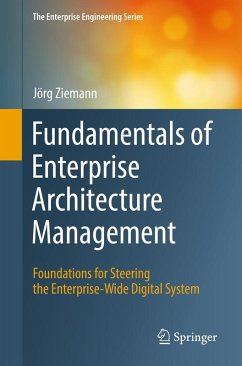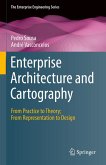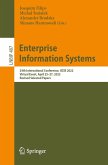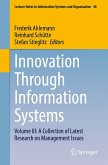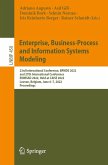This textbook provides a comprehensive, holistic, scientifically precise, and practically relevant description of Enterprise Architecture Management (EAM). Based on state-of-the-art concepts, it also addresses current trends like disruptive digitization or agile methods.
The book is structured in five chapters. The first chapter offers a comprehensive overview of EAM. It addresses questions like: what does EAM mean, what is the history of EAM, why do enterprises need EAM, what are its goals, and how is it related to digitalization? It also includes a short overview of essential EAM standards and literature. The second chapter provides an overview of Enterprise Architecture (EA). It starts with clarifying basic terminology and the difference between EA and EAM. It also gives a short summary of existing EA frameworks and methods for structuring the digital ecosystem into layers and views. The third chapter addresses the strategic and tactical context of the EAM capability in an enterprise. It defines essential terms and parameters in the context of enterprise strategy and tactics as well as the operative, organizational context of EAM. The fourth chapter specifies the detailed goals, processes, functions, artifacts, roles and tools of EAM, building the basis for an EAM process framework that provides a comprehensive overview of EAM processes and functions. Closing the circle, the last chapter describes how to evaluate EAM in an enterprise. It starts by laying out core terminology, like "metric" and "strategic performance measurement system" and ends with a framework that integrates the various measuring areas in the context of EA and EAM.
This textbook focuses on two groups: First, EAM scholars, ie bachelor or master students of Business Information Systems, Business Administration or Computer Science. And second, EAM practitioners working in the field of IT strategy or EA who need a reliable, scientifically solid, and practically proven state-of-the-art description of essential EAM methods.
Dieser Download kann aus rechtlichen Gründen nur mit Rechnungsadresse in A, B, BG, CY, CZ, D, DK, EW, E, FIN, F, GR, HR, H, IRL, I, LT, L, LR, M, NL, PL, P, R, S, SLO, SK ausgeliefert werden.
Es gelten unsere Allgemeinen Geschäftsbedingungen: www.buecher.de/agb
Impressum
www.buecher.de ist ein Shop der
buecher.de GmbH & Co. KG
Bürgermeister-Wegele-Str. 12,
86167 Augsburg
Amtsgericht Augsburg HRA 13309
Persönlich haftender Gesellschafter: buecher.de Verwaltungs GmbH
Amtsgericht Augsburg HRB 16890
Vertretungsberechtigte:
Günter Hilger, Geschäftsführer
Christian Sailer, Geschäftsführer
Sitz der Gesellschaft:Augsburg
Ust-IdNr. DE 204210010

